The tobacco pipe has been used for centuries. Its design is simple, but each part serves a clear purpose.
Many people are curious about how it works. They want to know what each section does and why the shape matters.
Here is a direct look at the parts of a tobacco pipe. Knowing how it all fits together makes every use better.
The Three Main Parts of a Tobacco Pipe
Every tobacco pipe shares a basic structure made up of three main parts. Each part plays a role in how the pipe functions, how the smoke travels, and how the experience feels.
While many shapes and styles exist, the core elements remain the same. A proper understanding of each one helps with usage, cleaning, and choosing the right pipe.
1. The Bowl
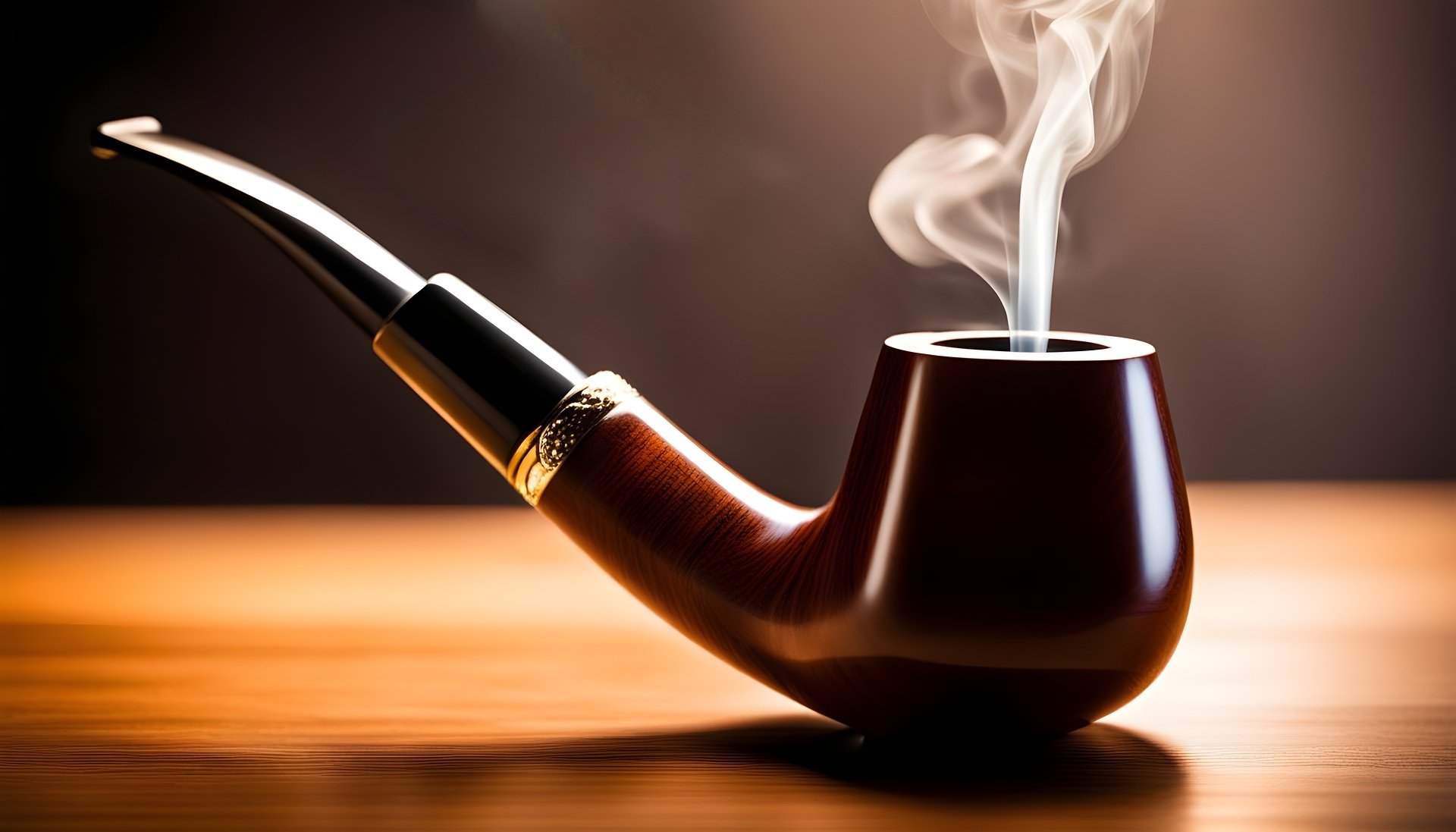
The bowl sits at the front of the pipe. It is where the tobacco is placed and lit. Most are made from briar, meerschaum, or other hardwoods. The shape of the bowl affects airflow and burn rate.
2. The Head
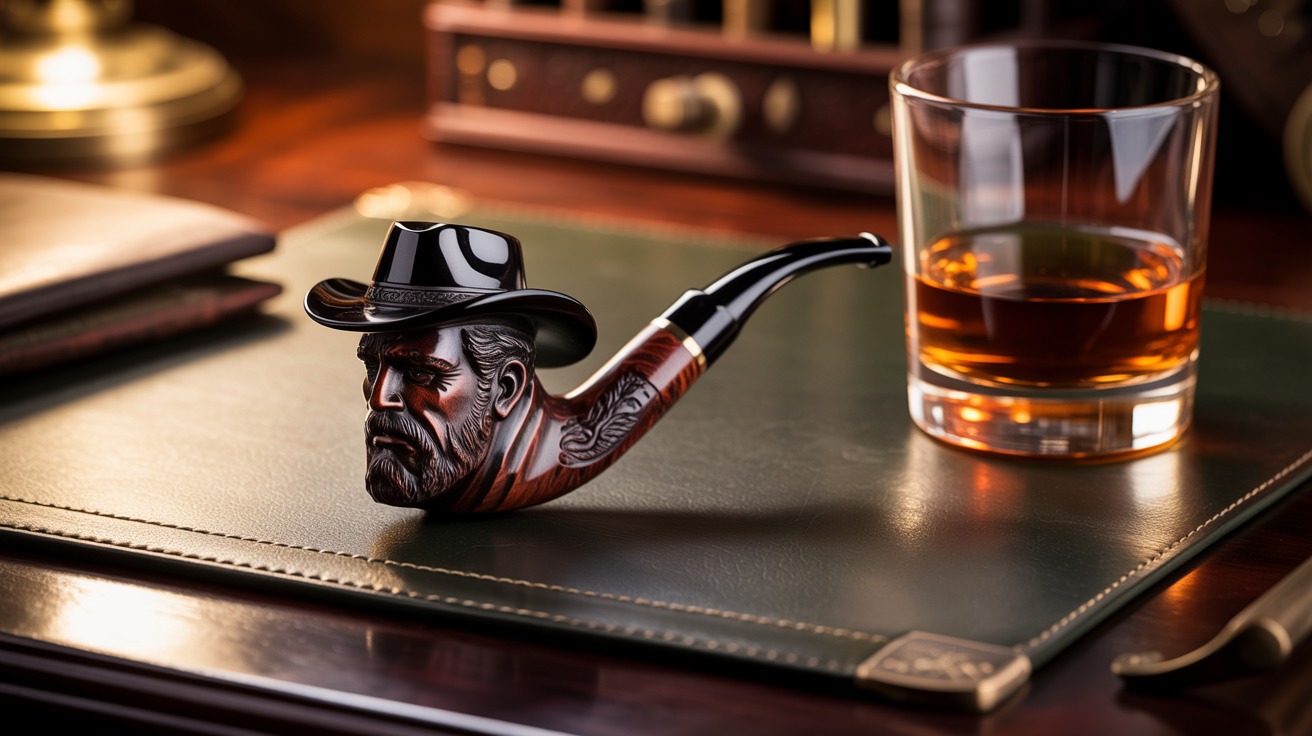
The head refers to the outer structure of the bowl. It can be smooth, rusticated, or sandblasted. It defines the shape and often features flamed wood grain for aesthetics.
3. The Stove (Combustion Chamber)
.jpg)
Located inside the bowl, the stove holds the tobacco. It is usually conical and smooth to ensure proper airflow and even burning.
Wall thickness ranges between 25 mm and 50 mm. The thickest point is the center, where heat peaks during smoking.
An ideal fill level fully packs the chamber. During the break-in period, some smokers choose to fill it only halfway. Even ignition ensures smooth combustion.
The Shank
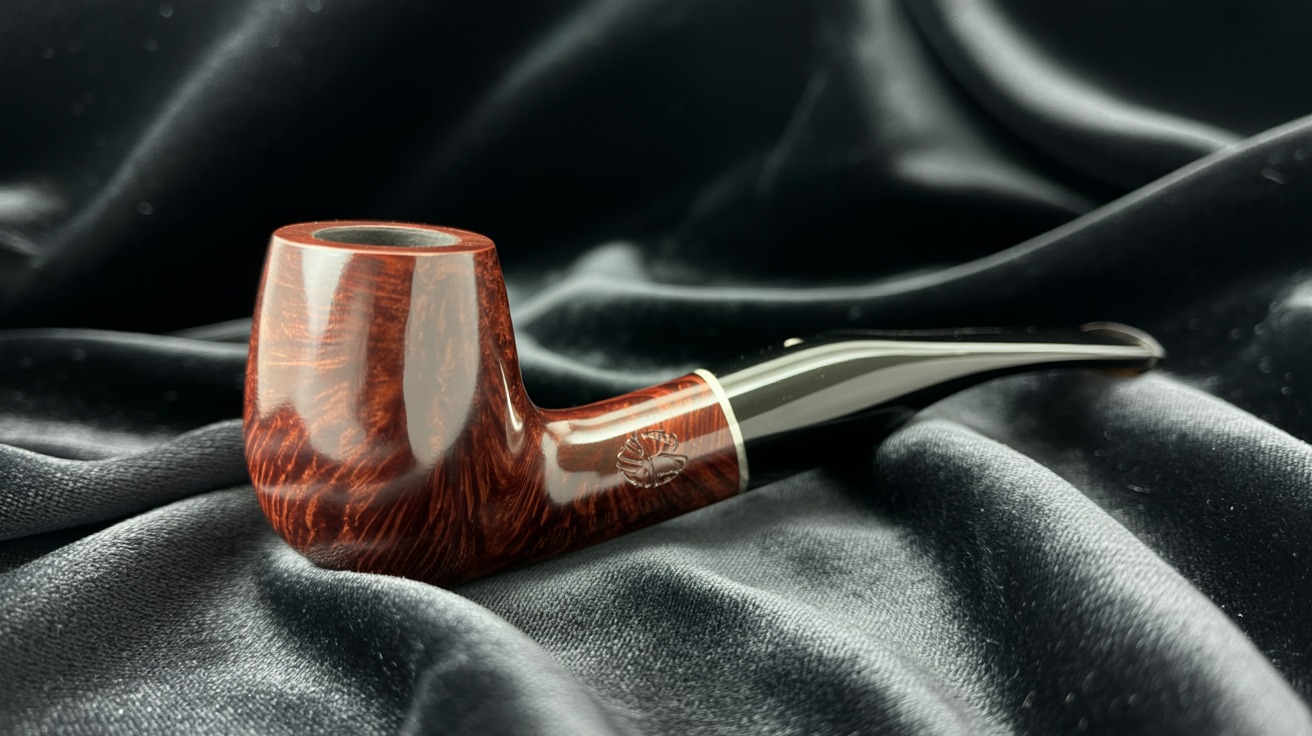
The shank connects the bowl to the mouthpiece. It houses the draft hole and supports the internal airway.
The Draft Hole
The draft hole runs through the center of the shank. It channels the smoke from the stove to the mouthpiece. A precise draft hole ensures consistent airflow.
Materials Used
Common shank materials include:
-
Wood (usually briar)
-
Metal (used for structural support or added cooling)
-
Bamboo (valued for weight and look)
The Mouthpiece
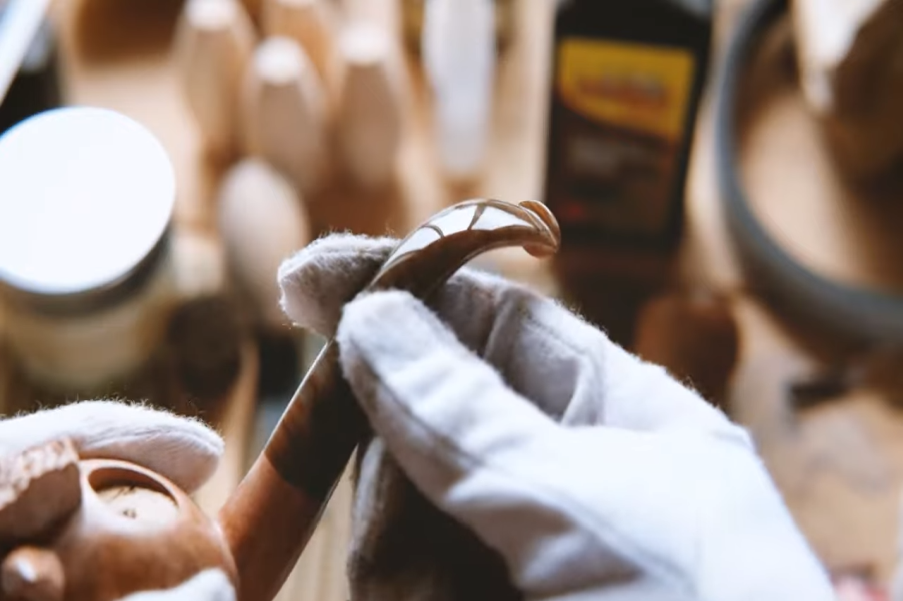
The mouthpiece is the part placed between the lips. Its shape and material influence comfort and draw quality.
The Bit
The bit is the flat end of the mouthpiece where the smoker grips with their teeth. Some mouthpieces are curved for comfort; others remain straight for control.
The Tenon
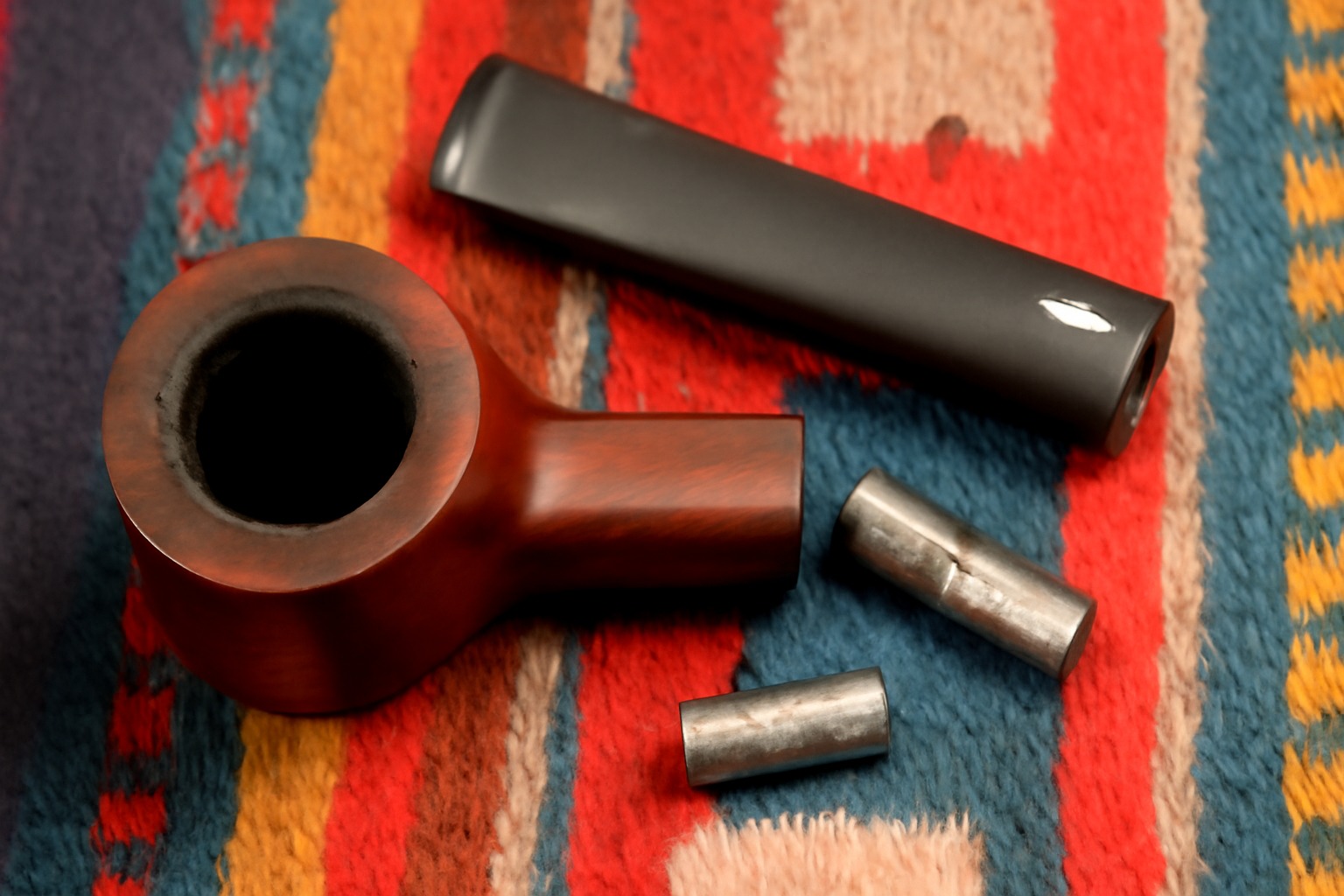
The tenon is a protruding piece that fits into the mortise inside the shank. It holds the mouthpiece in place.
Materials Used
-
Ebonite: A rubber-sulfur compound. It is elastic but sensitive to sunlight.
-
Methacrylate: Durable and rustproof. It resists aging better than ebonite.
Additional Components
Some pipes include extra features that serve specific functions or enhance durability.
The Filter
Found inside the shank, the filter often contains activated charcoal. It reduces tar and moisture. Not all pipes include filters; some users prefer unrestricted airflow.
The Stinger
A stinger is a metal extension inside the draft hole, often found in older or budget pipes. It cools smoke but can restrict draw.
The Lip
Located at the very end of the bit, the lip prevents the pipe from slipping out of the mouth. It also shapes how smoke enters.
Materials Used in Tobacco Pipes and How They Affect the Experience
The material of a tobacco pipe does more than shape its look. It affects the temperature, weight, draw, and even the taste of the smoke.
Different parts of the pipe may use different materials, and each choice has a reason behind it.
Some materials absorb moisture better. Others last longer or offer a smoother grip. Knowing what each part is made from can help you choose a pipe that fits your preference and routine.
Here is a breakdown of the most common materials used in tobacco pipes and how they influence the overall smoking experience.
| Part | Material | Traits | Pros | Cons |
|---|---|---|---|---|
| Bowl | Briar | Dense, heat-resistant | Durable, neutral taste | Price varies by grade |
| Bowl | Meerschaum | Porous, light | Cool smoke, no ghosting | Can be fragile |
| Bowl | Cherrywood | Softer, light flavor notes | Easy draw | Less heat resistance |
| Shank | Briar | Matches bowl, absorbs heat | Durable | Heavier feel |
| Shank | Bamboo | Hollow, light | Cools smoke, light feel | More fragile |
| Shank | Metal | Rigid, often detachable | Easy cleaning | May affect taste |
| Mouthpiece | Ebonite | Rubber-based, soft bite | Comfortable | Sensitive to sunlight |
| Mouthpiece | Methacrylate | Plastic-based, rigid | Long-lasting | Harder on the teeth |
How Pipe Shape Changes the Smoke
View this post on Instagram
Shape affects everything-how the pipe feels, how it draws, how cool or harsh the smoke gets. Every curve and cut changes the experience.
Straight Pipes
Clean and direct. Easy airflow. Simple to maintain.
Common shapes:
-
Billiard - classic and balanced
-
Dublin - flared bowl, faster burn
-
Lovat - long shank, solid grip
Bent Pipes
Curved for comfort. Less jaw pressure. Better for long sessions.
Common shapes:
-
Bent Billiard - familiar and relaxed
Churchwarden
Long stem. Cooler smoke. Built for slow, seated use. Not pocket-friendly but easy on the throat.
Traits of Different Tobacco Pipe Shapes
-
Straight: Open draw, easier cleaning
-
Bent: More comfort, steadier grip
-
Long stem: Cooler smoke
-
Short stem: Richer flavor
Frequently Asked Questions
How long does a tobacco pipe usually last?
A well-made tobacco pipe can last decades. With regular cleaning and careful handling, briar pipes often stay in good condition for 20 years or more. Longevity depends on material, usage, and maintenance.
Do all pipes need to rest between uses?
Yes. After smoking, a pipe should rest for at least 24 hours. This allows moisture to evaporate and helps prevent sour taste or long-term damage. Rotating between two or three pipes extends their life.
How often should a pipe be cleaned?
After every use, remove ash and residue. Run a pipe cleaner through the stem. Deep cleaning should follow every 10 to 15 uses, including removing the mouthpiece and cleaning the draft hole and bowl interior.
What tools do you need to maintain a pipe?
At minimum: pipe cleaners, a tamper, a reamer, and soft cloth. A pipe tool that combines scraper, pick, and tamper is a good all-in-one choice. Cleaning alcohol and cotton swabs help with deeper maintenance.
Last Words
A tobacco pipe may look simple, but every part shapes the experience. Materials, shape, care-they all matter. Once you know how it works, every session feels more natural. Choose with purpose. Use with care. It all adds up.




